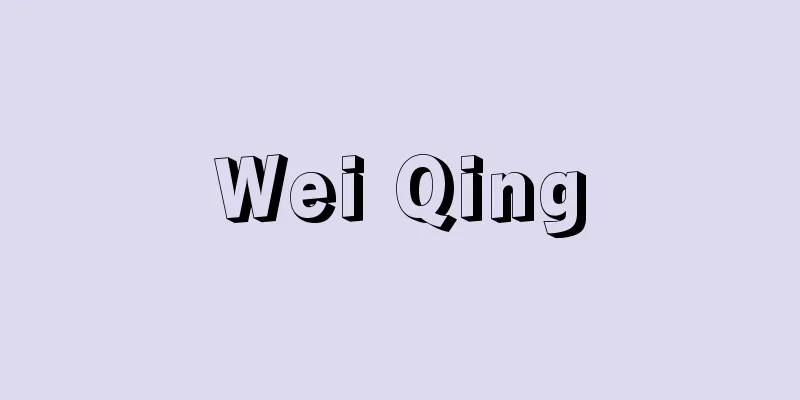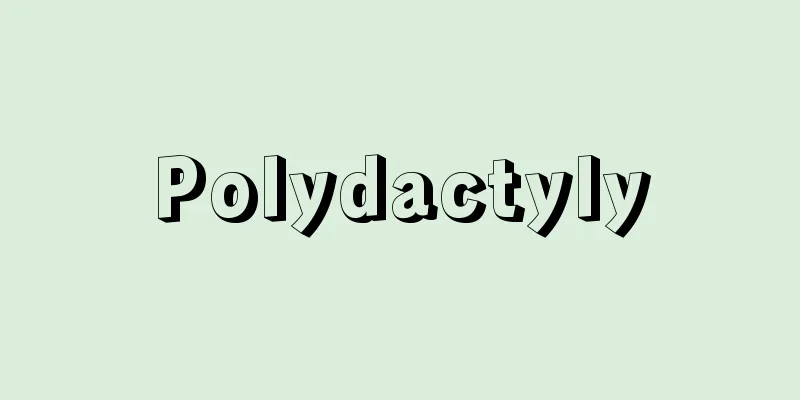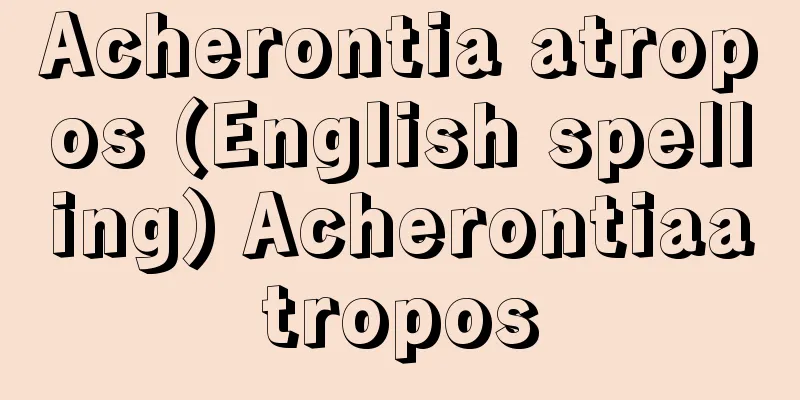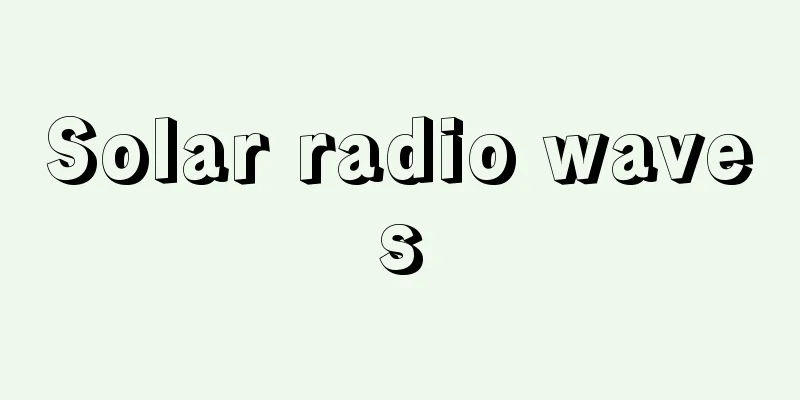Glaucoma
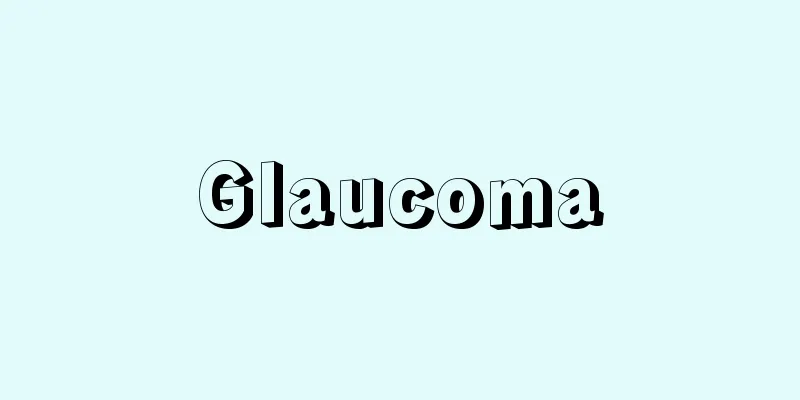
|
What kind of disease is it? ●Main symptoms and course Glaucoma is a disease in which the optic nerve is compressed and damaged by increased intraocular pressure. The field of vision gradually narrows, and if left untreated, it can lead to blindness. The name glaucoma comes from the fact that the pupils dilate as intraocular pressure increases, causing things to appear greenish. There is a liquid called aqueous humor in the eye (which carries nutrients instead of blood), which is produced in the ciliary body and discharged from the Schlemm's canal. The pressure of this aqueous humor is called intraocular pressure, and it plays an important role in maintaining the shape of the eye and functioning normally. In the early stages, even if a scotoma (a blind area) appears, there are few subjective symptoms because both eyes compensate for it. After that, the scotoma spreads, vision deteriorates, and most of the area becomes blind. In the case of acute glaucoma, the sudden increase in intraocular pressure causes symptoms such as eye pain, headache, and nausea. ● Causes of the disease and how symptoms develop Glaucoma is broadly classified into three types: congenital glaucoma (a rare disease that occurs from birth until the age of 3 or 4), which occurs when the drainage channels that drain aqueous humor are underdeveloped, causing aqueous humor to accumulate and increase intraocular pressure; secondary glaucoma, which is caused by inflammation or injury; and primary glaucoma, where the cause cannot be identified. The most common type is primary glaucoma, which is further divided into closed-angle glaucoma (in which the angle is closed, causing aqueous humor to accumulate and resulting in a rapid rise in intraocular pressure, which can lead to blindness within a short period of time) and open-angle glaucoma (in which the angle is not closed, but intraocular pressure gradually increases, causing gradual vision impairment over a long period of time and eventually leading to blindness). Treatment methods vary depending on the type of disease, but once the optic nerve is damaged it cannot be restored, so early detection and treatment are desirable. ●Characteristics of the disease In Japan, it is estimated that 5% of people over the age of 40, and 3 to 4 million people nationwide, have glaucoma, but 90% of these are latent patients who are unaware of any symptoms. EBM checks on common treatments and care ■Secondary glaucoma [Treatment and care] Remove the causes of increased intraocular pressure [Evaluation] ☆☆☆☆ [Evaluation points] If the cause is corticosteroids, it is necessary to consider stopping the use of eye drops or taking medications that contain them. The effectiveness of this has been confirmed by reliable clinical studies. (4)(5) [Treatment and care] Eye drops to lower intraocular pressure [Rating] ☆☆☆☆☆ [Evaluation points] It is important to control intraocular pressure while treating the disease. The effectiveness of drugs to lower intraocular pressure has been confirmed by highly reliable clinical studies. (6)(7)(13)(14) [Treatment and care] Perform surgery according to symptoms [Rating] ☆☆☆ [Evaluation points] Depending on the symptoms, surgery may be performed if necessary, such as trabeculotomy (a method of opening the trabecular meshwork in the passage of aqueous humor to promote the flow of aqueous humor), trabeculectomy (a method of creating a bypass between the aqueous humor and the back of the white of the eye to facilitate the flow of aqueous humor), and cyclodestruction (a method of suppressing the production of aqueous humor in the ciliary body). The effectiveness of these procedures has been confirmed through clinical studies. (8)-(10)(15)-(17) ■Congenital glaucoma [Treatment and care] Goniotomy [Evaluation] ☆☆☆ [Evaluation points] This method makes it easier for aqueous humor to flow by cutting the angle that is preventing the aqueous humor from draining, and its effectiveness has been confirmed in clinical studies. (1)-(3) ■ Angle-closure glaucoma [Treatment and care] Perform tests to determine the cause [Evaluation] ☆☆☆☆☆ [Evaluation Points] When symptoms such as sudden bloodshot eyes, decreased vision, and increased intraocular pressure appear, it is important to first determine the cause. Since the treatment for glaucoma varies depending on the cause, the need for multiple examinations has been recognized by highly reliable clinical studies. (11)(12) [Treatment and care] Use medication to lower intraocular pressure [Rating] ☆☆☆☆☆ [Evaluation Points] It has been confirmed by highly reliable clinical studies that intraocular pressure needs to be normalized as soon as possible. In particular, in the case of an acute glaucoma attack, if treatment to lower intraocular pressure is not administered promptly and appropriately, there is a risk of serious damage to the optic nerve and loss of vision. (13)(14) [Treatment and care] Perform laser iridotomy [Rating] ☆☆☆☆☆ [Evaluation points] Once intraocular pressure has returned to normal, laser iridotomy is performed to open the iris that is blocking the angle and widen the passage of aqueous humor. The effectiveness of this method has been confirmed by highly reliable clinical studies. (15)~(17) [Treatment and care] Medications to lower intraocular pressure are used even after surgery. [Rating] ☆☆☆☆☆ [Evaluation Points] Highly reliable clinical studies have confirmed the importance of maintaining normal intraocular pressure after iridotomy. (18) [Treatment and care] Surgery is also performed on the asymptomatic eye [Rating] ☆☆☆ [Evaluation points] Mentzes et al. from Germany reported that after 23 glaucoma patients underwent laser iridotomy in the other healthy eye as a preventive measure, none of the patients subsequently developed glaucoma in the healthy eye. (19)-(21) ■Open angle glaucoma [Treatment and care] Use medication to lower intraocular pressure [Rating] ☆☆☆☆☆ [Evaluation points] There are highly reliable long-term clinical studies that show that lowering intraocular pressure with eye drops is more effective. (6)(7) [Treatment and care] Consider surgery [Rating] ☆☆☆☆☆ [Evaluation points] Long-term, highly reliable clinical studies have shown that when medications cannot normalize intraocular pressure and visual field constriction progresses, surgery such as laser trabeculoplasty, trabeculotomy, and trabeculectomy should be considered. (8)-(10) Checking commonly used drugs with EBM Eye drops to lower intraocular pressure [drug name] Sanpilo (pilocarpine hydrochloride) (22) [Rating] ☆☆☆☆☆ [Drug name] Xalatan (Latanoprost) (23) [Rating] ☆☆☆☆☆ [Drug name] Travatans (travoprost) (23) (24) [Rating] ☆☆☆☆☆ [Drug name] Lumigan (bimatoprost) (23) [Rating] ☆☆☆☆☆ [Drug name] Tapros (tafluprost) (25) [Rating] ☆☆☆☆☆ [Drug name] Mikelan (Carteolol hydrochloride) (26) [Rating] ☆☆☆☆☆ [Drug name] Timoptol (Timolol maleate) (27) [Rating] ☆☆☆☆☆ [Drug name] Trusopt (dorzolamide hydrochloride) (28) (29) [Rating] ☆☆☆☆☆ [Evaluation Points] All of these have been shown to be effective in lowering intraocular pressure through highly reliable clinical studies. Recently, these drugs have been used in combination. However, some drugs require caution when used in combination depending on the patient's medical history, so it is important to consult with an ophthalmologist. When eye drops do not sufficiently lower intraocular pressure [Drug name] Diamox (acetazolamide) (30)-(32) [Rating] ☆☆☆☆☆ [Evaluation points] When eye drops alone are not enough to lower intraocular pressure, oral carbonic anhydrase inhibitors are used. The effectiveness of acetazolamide has been confirmed by highly reliable clinical studies. Overall, it is currently the most reliable treatment method . <br /> Rapid diagnosis and identification of the cause are important. Diagnosing glaucoma and clarifying its cause will determine whether appropriate treatment can be administered promptly. The first symptoms of glaucoma may be headache or abdominal pain, and it may be difficult to diagnose the condition at first. Be aware of side effects of medications depending on your medical history If you have secondary glaucoma caused by corticosteroids, you must immediately discontinue any corticosteroid-containing eye drops or medications. Also, regardless of the cause, use one of the eye drops that have been proven to effectively lower intraocular pressure. Cholinergic agonists (Sanpilo (pilocarpine hydrochloride)), adrenergic agonists (pivalefrin (dipivefrine hydrochloride)), beta-blockers (Mikelan (carteolol hydrochloride)), prostaglandin derivatives (Xalatan (latanoprost)), and carbonic anhydrase inhibitors (Trusopt (dorzolamide hydrochloride)) have all been shown to lower intraocular pressure. Therefore, taking into consideration the illnesses each individual has, the medicine with the lowest possibility of causing side effects is selected. With beta-blockers, the medicine is absorbed into the bloodstream and circulates throughout the body, and can cause bradycardia, low blood pressure, heart block, bronchial asthma, erectile dysfunction, depression, etc., so caution is required for people with existing illnesses. If eye drops alone do not sufficiently lower intraocular pressure, an oral carbonic anhydrase inhibitor (Diamox (acetazolamide)) may be used in combination. Surgery if medication does not improve the condition If intraocular pressure does not return to normal even with medication, or if intraocular pressure returns to normal but visual field constriction progresses, treatments such as laser iridotomy and trabeculectomy are appropriate. In addition, since if one eye has glaucoma, there is a high possibility that the other eye will also develop glaucoma, it has been reported that it is likely to be effective to perform preventive laser iridotomy on the other eye as well, so it is a good idea to consult with an ophthalmologist. (1)Beck AD. Diagnosis and management of pediatric glaucoma. Ophthalmol Clin North Am. 2001;14:501-512. Source: "EBM: A book that explains correct treatment" Information about the book "EBM: A book that explains correct treatment" |
|
どんな病気でしょうか? ●おもな症状と経過 緑内障(りょくないしょう)は眼圧(がんあつ)が上がることによって視神経が圧迫され、障害されていく病気です。しだいに視野が狭くなり、進行を放置していると失明に至ります。眼圧が上がることによって瞳孔(どうこう)が開き、緑がかって見えることからこの名がついています。 目の中には房水(ぼうすい)(血液の代わりに栄養を運ぶ機能)という液体があり、毛様体(もうようたい)でつくられ、シュレム管から外に排出されます。この房水の圧力が眼圧と呼ばれるもので、目の形状を一定に保ち、正常に機能するための重要な役割を担っています。 初期には暗点(見えない部分)ができても、両眼で補完するので自覚症状はあまりありません。その後暗点が広がって、視力が落ち、見えない部分がほとんどになります。急性の緑内障の場合は、眼圧が急に高まるため目の痛みや頭痛、吐き気などの症状をおこします。 ●病気の原因や症状がおこってくるしくみ 生まれつき房水を排出する流水路が未発達のため、房水がたまって眼圧が上昇する先天性緑内障(出生時から3、4歳までの緑内障の場合で、まれな病気)と、炎症やけがなどが原因となっておこる続発性緑内障、原因が特定できない原発性緑内障の3タイプに大きく分類されます。 もっとも多いのが原発性緑内障で、これは眼圧上昇のメカニズムの違いによってさらに閉塞性隅角緑内障(へいそくせいぐうかくりょくないしょう)(隅角がふさがれ、房水がたまって急速に眼圧が上がる。短期間で失明する可能性がある)と、開放性隅角緑内障(隅角がふさがっていないが、徐々に眼圧が高くなり、長期間にわたってだんだん視力障害が進み、いずれ失明することがある)に分かれます。 病気のタイプで治療方法は異なりますが、いずれもいちど障害された視神経を元に戻すことはできません。早期発見、早期治療が望まれます。 ●病気の特徴 わが国では40歳以上の人の5パーセント、全国では300万~400万人が緑内障と推定されていますが、そのうちの90パーセントは自覚症状のない潜在的な患者さんであるとされています。 よく行われている治療とケアをEBMでチェック ■続発性緑内障 [治療とケア]眼圧を上昇させる原因をとり除く [評価]☆☆☆☆ [評価のポイント] 副腎皮質(ふくじんひしつ)ステロイド薬(やく)が原因となっている場合は、それが含まれる薬の点眼や服用の中止を検討することが必要です。これは信頼性の高い臨床研究によって効果が確認されています。(4)(5) [治療とケア]眼圧を下げる薬を点眼する [評価]☆☆☆☆☆ [評価のポイント] 病気の治療と同時に眼圧のコントロールが重要です。眼圧を下げる薬の効果は非常に信頼性の高い臨床研究によって確認されています。(6)(7)(13)(14) [治療とケア]症状に応じた手術を行う [評価]☆☆☆ [評価のポイント] 線維柱帯切開術(せんいちゅうたいせっかいじゅつ)(房水の通り道にある線維柱帯を開いて、房水の流れを促進する方法)、線維柱帯切除術(房水と白目の裏側の間にバイパスをつくって房水を流れやすく促進する方法)、毛様体破壊術(もうようたいはかいじゅつ)(毛様体における房水の産生を抑える方法)など、症状によっては必要であれば手術も行います。これらは臨床研究によって効果が確認されています。(8)~(10)(15)~(17) ■先天性緑内障 [治療とケア]隅角切開術(ぐうかくせっかいじゅつ)を行う [評価]☆☆☆ [評価のポイント] 房水の排出を妨げている隅角を切開して、房水を流れやすくする方法で、臨床研究によって効果が確認されています。(1)~(3) ■閉塞性隅角緑内障 [治療とケア]原因を確定する検査を行う [評価]☆☆☆☆☆ [評価のポイント] 急激な充血、視力の低下、眼圧の上昇などの症状が現れたら、まず、原因を確定することが重要です。緑内障は原因によって治療法が異なるため、複数回にわたる検査の必要性は非常に信頼性の高い臨床研究によっても認められています。(11)(12) [治療とケア]眼圧を下げるための薬を用いる [評価]☆☆☆☆☆ [評価のポイント] できるだけ早く眼圧を正常化する必要があることは非常に信頼性の高い臨床研究によって確認されています。とくに急性緑内障発作(ほっさ)の場合は、早急に、かつ適切に眼圧を下げる治療をしないと視神経に大きな障害が加わり、失明する危険性があります。(13)(14) [治療とケア]レーザー虹彩切開術(こうさいせっかいじゅつ)を行う [評価]☆☆☆☆☆ [評価のポイント] 眼圧が正常化すれば、レーザー虹彩切開術を行って隅角をふさいでいる虹彩を切開して房水の通り道を広くします。この方法の効果は非常に信頼性の高い臨床研究によって確認されています。(15)~(17) [治療とケア]手術後も眼圧を下げるための薬を用いる [評価]☆☆☆☆☆ [評価のポイント] 非常に信頼性の高い臨床研究によって、虹彩切開術後も眼圧を正常に保つことが重要であることが確認されています。(18) [治療とケア]症状のないほうの目の手術も行う [評価]☆☆☆ [評価のポイント] ドイツのメンツェスらは、23人の緑内障患者さんを対象に、予防的な措置から正常な他方の目にレーザーによる虹彩切開術を行ったところ、その後正常なほうの目で緑内障をおこした患者さんは一人もいなかったと報告しています。(19)~(21) ■開放性隅角緑内障 [治療とケア]眼圧を下げるための薬を用いる [評価]☆☆☆☆☆ [評価のポイント] 点眼薬によって眼圧を下げたほうが効果があるとする非常に信頼性の高い長期的な臨床研究があります。(6)(7) [治療とケア]手術を検討する [評価]☆☆☆☆☆ [評価のポイント] 長期的な非常に信頼性の高い臨床研究から、薬で眼圧を正常化できずに視野狭窄(しやきょうさく)が進行する場合はレーザー線維柱帯形成術、線維柱帯切開術、線維柱帯切除術などの手術を検討すべきとされています。(8)~(10) よく使われている薬をEBMでチェック 眼圧を下げるための点眼薬 [薬名]サンピロ(ピロカルピン塩酸塩)(22) [評価]☆☆☆☆☆ [薬名]キサラタン(ラタノプロスト)(23) [評価]☆☆☆☆☆ [薬名]トラバタンズ(トラボプロスト)(23)(24) [評価]☆☆☆☆☆ [薬名]ルミガン(ビマトプロスト)(23) [評価]☆☆☆☆☆ [薬名]タプロス(タフルプロスト)(25) [評価]☆☆☆☆☆ [薬名]ミケラン(カルテオロール塩酸塩)(26) [評価]☆☆☆☆☆ [薬名]チモプトール(チモロールマレイン酸)(27) [評価]☆☆☆☆☆ [薬名]トルソプト(ドルゾラミド塩酸塩)(28)(29) [評価]☆☆☆☆☆ [評価のポイント] これらはすべて非常に信頼性の高い臨床研究から眼圧を低下させる効果があるとされています。最近では、これらを組み合わせて使用することもあります。ただし、既往症によっては併用に注意を要する薬剤もあるので眼科専門医とよく相談することが必要です。 点眼薬では十分に眼圧が下がらない場合 [薬名]ダイアモックス(アセタゾラミド)(30)~(32) [評価]☆☆☆☆☆ [評価のポイント] 点眼薬だけでは十分に眼圧が下がらない場合には、内服の炭酸脱水酵素抑制薬を用います。アセタゾラミドの効果は非常に信頼性の高い臨床研究によって確認されています。 総合的に見て現在もっとも確かな治療法 早急な診断と原因の特定が重要 緑内障であることの診断と、その原因を明確にすることが、適切な治療を速やかに行えるかどうかを決定します。緑内障の初発症状は頭痛や腹痛である場合があり、当初はなかなか診断がつかないこともあります。 既往症によっては薬剤の副作用に注意 副腎皮質ステロイド薬による続発性緑内障であれば、副腎皮質ステロイド薬を含む点眼薬や服用薬をただちに中止しなければなりません。また、原因はなんであれ、同時に、眼圧を効果的に下げることが証明されている点眼薬の一つを使用します。コリン作動薬〔サンピロ(ピロカルピン塩酸塩)〕、アドレナリン作動薬〔ピバレフリン(ジピベフリン塩酸塩)〕、β遮断薬〔ミケラン(カルテオロール塩酸塩)〕、プロスタグランディン誘導体〔キサラタン(ラタノプロスト)〕、炭酸脱水酵素抑制薬〔トルソプト(ドルゾラミド塩酸塩)〕などはどれも眼圧を低下させることが確認されています。 したがって、個人個人のもっている病気のことも考えて副作用のおこる可能性のもっとも低い薬が選ばれます。β遮断薬では、点眼した薬が血液に吸収されて全身にまわり、徐脈(じょみゃく)や低血圧、心ブロック、気管支喘息(きかんしぜんそく)、勃起障害、抑うつなどを引きおこすことがありますので、もともとそのような病気をもっている人には要注意です。 点眼薬だけで眼圧が十分に下がらない場合には、内服の炭酸脱水酵素抑制薬〔ダイアモックス(アセタゾラミド)〕を併用することもあります。 薬で正常化しない場合は手術も 薬を使っても眼圧が正常化しない場合や、眼圧が正常化しても視野狭窄が進行する場合には、レーザー光線を用いた虹彩切開術や線維柱帯切除術などの治療が適応となります。 また、片方の目が緑内障の場合に、他方も緑内障になる可能性が高いことから、他方の目についても予防的にレーザーによる虹彩切開術を施行することが有効である可能性が高いことも報告されていますので、眼科専門医と相談するとよいでしょう。 (1)Beck AD. Diagnosis and management of pediatric glaucoma. OphthalmolClin North Am. 2001;14:501-512. 出典 法研「EBM 正しい治療がわかる本」EBM 正しい治療がわかる本について 情報 |
<<: Pseudomonas aeruginosa - Ryokunoukin
>>: Mung beans - mung beans (English spelling)
Recommend
Ashida - Ashida
...From the middle of the Edo period, tools were ...
Ukiyoe - Ukiyoe
This is a type of painting popular among the comm...
Sanyutei Ensho - Sanyutei Ensho
Rakugo performer. [Kazuo Sekiyama] First generati...
balloon-flower
…As the scientific name Platycodon (broad bell) s...
col
… Anseilen [German]: Tying together with a rope t...
Alfonso XIII
1886‐1941 King of Spain. Reigned 1886-1931. Born a...
Roskilde (English spelling)
The capital of Roskilde county in eastern Denmark....
Shopping mall - Kaimawariten
… Retailing is the process of selling goods manuf...
Glass for chemical cutting
…If the solubility of the precipitated crystals i...
Easter - Easter (English spelling)
A Christian holiday commemorating the resurrection...
Acute triangle
A triangle with three acute angles. An obtuse tria...
Sanzo Nosaka
Politician. Communist. Born in Hagi City, Yamaguc...
Allergic diarrhea
...This is thought to be caused by the toxins pro...
sulfane disulfonic acid
... n = 5 has been identified. Dithionic acid H 2...
orbiting astronomical observatory
…Following this spectacular start of the space ob...

